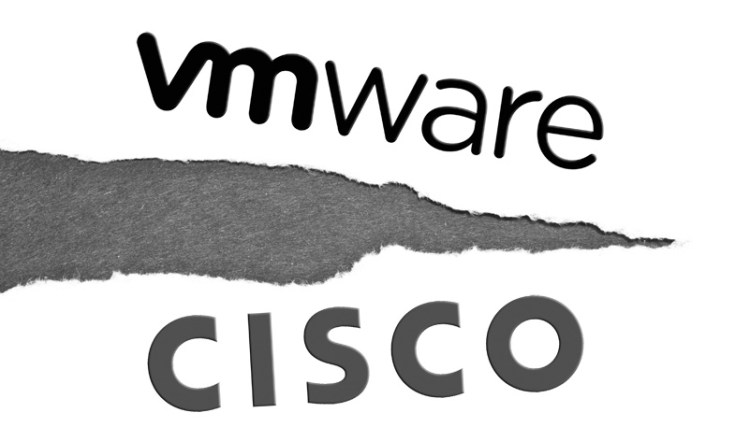VMware and Cisco Systems are partners, not competitors. At least that’s the line both companies kept pushing at last week’s VMworld conference.
This mutual courtesy is meant to comfort the thousands of enterprises like Hertz and Columbia Sportswear, who rely on integrated VMware-Cisco solutions to power their digital infrastructures, but it’s just a veneer. VMware’s recently announced NSX platform drags the two IT giants into direct competition, leaving shared customers concerned about their lack of synergy.
“Both vendors have the strategic objective of being the dominant vendor who provides and manages data center infrastructure,” said Joe Skorupa, a Gartner analyst specializing in software-defined networking. “It’s kind of hard to have two.”
Scheduled for release in the fourth quarter of 2013, NSX draws on technology from Nicira, a network virtualization startup VMware acquired last year for $1.26 billion. The platform simulates networking hardware much like VMware’s Vsphere technology simulates servers, decoupling network services (switching, bridging, routing, firewall capabilities, etc.) from the network’s physical infrastructure. This virtual architecture will enable NSX to work on general purpose hardware, reducing the need for proprietary networking equipment (and subsequently, the costs of operating a network).
“Increasingly, the barrier to flexibility in data centers is the network,” VMware CEO Pat Gelsinger said onstage at VMworld, where he unveiled NSX. “We have been bound to the physical infrastructure — today that changes.”
Cisco is noticeably absent from the list of 20 companies working to integrate their technologies with VMware’s NSX platform, which includes Dell, HP, and Juniper Networks. (It’s worth noting, however, that the list includes Sourcefire, a network security vendor Cisco will acquire later this year).
Editor’s note: Rowan Trollope, general manager of Cisco’s Collaboration Technology Group, will be at VentureBeat’s CloudBeat conference, Sept. 9-Sept. 10 in San Francisco — and VMware is a silver sponsor of the event. Register today!
VMware’s push to virtualize networking poses a serious threat to Cisco, who could see its hardware sales cannibalized by a software-centric approach to networking. Unsurprisingly, Cisco contends a networking solution that combines hardware and software in an integrated system is a far superior approach. But even if VMware’s NSX fails to gain mass-market traction, it could reset market expectations for what networking hardware should cost, which would be nearly as damaging to Cisco’s bottom line.
On Aug. 29, Cisco chief technology officer Padmasree Warrior outlined some of her company’s problems with VMware’s networking strategy.
“A software-only approach to network virtualization places significant constraints on customers,” wrote Warrior in a Cisco blog post. “It doesn’t scale, and it fails to provide full real-time visibility of both physical and virtual infrastructure. In addition this approach does not provide key capabilities such as multihypervisor support, integrated security, systems point-of-view, or end-to-end telemetry for application placement and troubleshooting.”
At the core of Warrior’s argument, which goes on to tout Cisco’s Application Centric Infrastructure, is the idea that a vertically integrated stack is the optimal networking solution — a self-serving concept as Cisco tries to move hardware.
While that may be true for smaller outfits with limited IT staff, some industry experts have taken issue with that claim and others she makes throughout the post (see a Dell employee’s dissent here).
Either way, VMware’s SDN push places significant stress on the VCE (virtual computing environment) effort, a joint VMware-EMC-Cisco venture that bundles VMware virtualization, EMC storage, and Cisco networking technology.
“With an ex-Cisco guy [Praveen Akkiraju] running VCE, will they continue to push Cisco’s offering, or will they push VMware’s, which has a much higher profile now?” asked Gartner’s Skorupa. “Whichever they choose to do will generate additional strain in the relationship.”
As the offerings from VMware and Cisco increasingly overlap, they’re likely to stop touting each other’s wares — leaving customers that currently rely on integrated VMware-Cisco solutions with a choice to make.
VentureBeat's mission is to be a digital town square for technical decision-makers to gain knowledge about transformative enterprise technology and transact. Learn More

